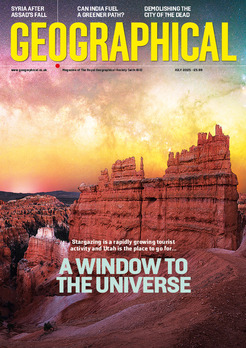
The shared shortcuts that defy the planners
Geographical phenomena # 5: Desire paths
The remarkable explained
By
Navigating beyond the organised pavements and parks of our urban spaces, desire paths are the unofficial footprints of a community, revealing the unspoken preferences, shared shortcuts and collective choices of humans. Often appearing as trodden dirt tracks through otherwise neat green spaces, these routes of collective disobedience cut corners, bisect lawns and traverse hills, representing the natural capability of people (and animals) to go from point A to point B most effectively.
Urban planners interpret desire paths as more than just convenient shortcuts; they offer valuable insights into the dynamics between planning and behaviour. Ohio State University allowed its students to navigate the Oval, a lawn in the centre of campus, freely, then proceeded to pave the desire paths, creating a web of effective routes students had established.
Yet, reluctance persists among other planners to integrate desire paths into formal plans, citing concerns about safety, environmental impact, or primarily, aesthetics. A Reddit webpage devoted to the phenomenon, boasting nearly 50,000 members, showcases images of local desire paths adorned with signs instructing pedestrians to adhere to designated walkways, underscoring the rebellious nature inherent in these human-made tracks. This clash highlights an ongoing struggle between the organic, user-driven evolution of public spaces and the desire for a visually curated and controlled urban environment.

The Wickquasgeck Trail is an example of a historical desire path, created by Native Americans to traverse the forests of Manhattan and move between settlements quickly. This trail, when Dutch colonists arrived, was widened and made into one of the main trade roads across the island, known at the time as de Heere Straat, or Gentlemen’s Street. Following the British assumption of control in New York, the street was renamed Broadway. Notably, Broadway stands out as one of the few areas in NYC that defies the grid-based system applied to the rest of the city, cutting a diagonal across parts of the city.
In online spaces, desire paths have sparked a fascination that can approach obsession, with the Reddit page serving as a hub. Contributors offer a wide array of stories, from little-known new shortcuts to long-established alternate routes.
Animal desire paths, such as ducks forging trails through frozen ponds or dogs carving direct routes in gardens, highlight the adaptability of these trails in both human and animal experiences. As desire paths criss-cross through both physical and virtual landscapes, they stand as a testament to the collective insistence on forging unconventional routes and embracing the spirit of communal choice.




